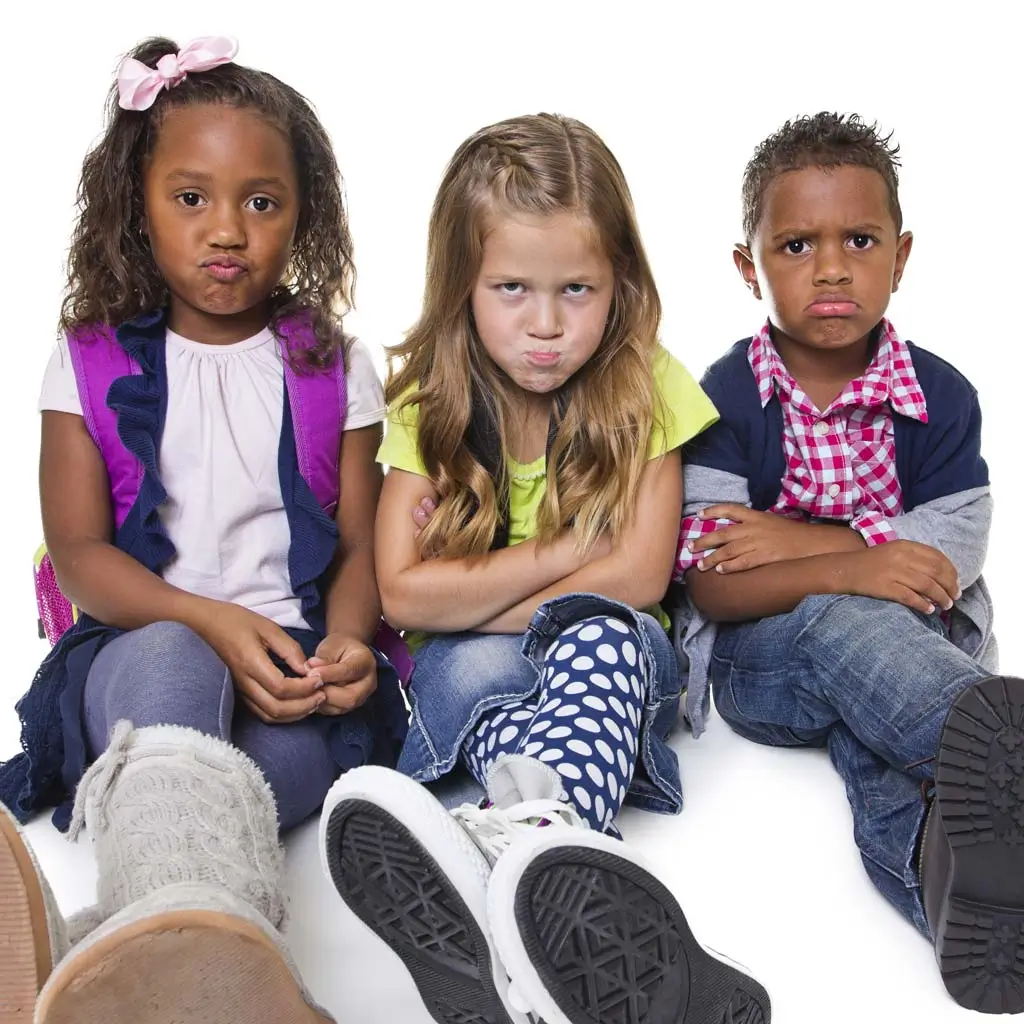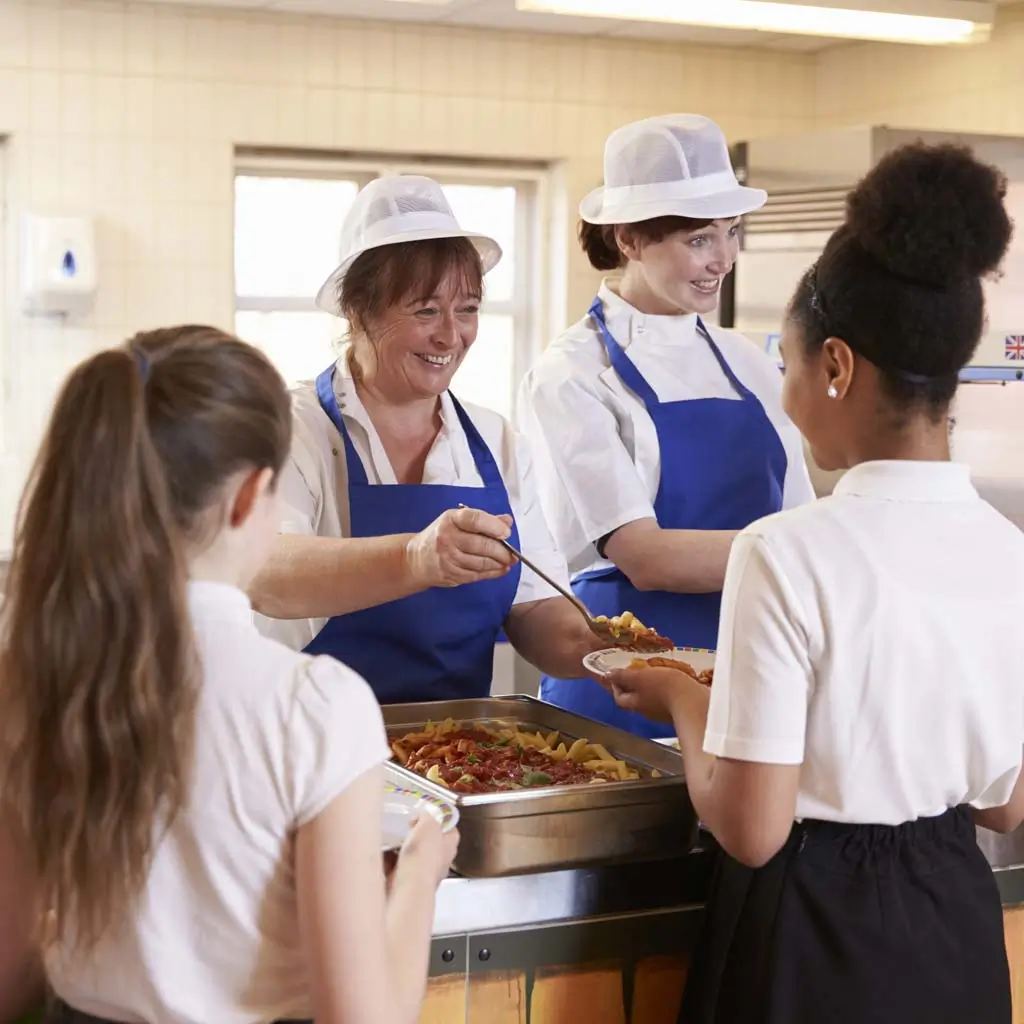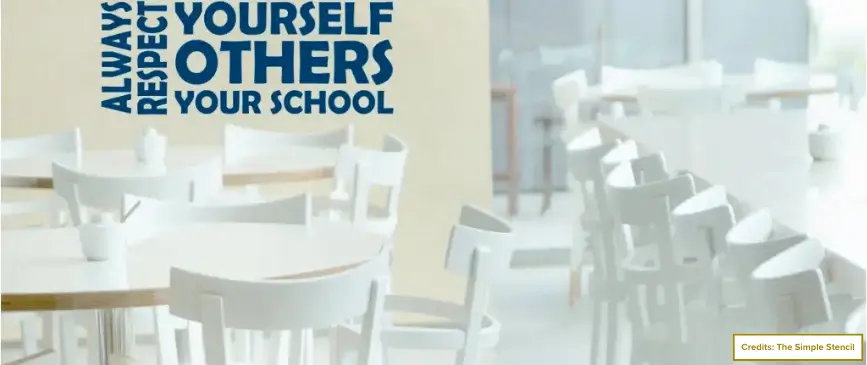Introduction
The school cafeteria serves as the sole refuge from the constraints of the educational institution and the daily grind of classes. It’s the sanctuary where students kick back, catch up with pals, and refuel during lunch. But let’s be real, it’s not always smooth sailing.
With this freedom comes the challenges of managing students, the shouting, the laughter that could wake the dead, and don’t the biggest behavior issues. Enough to make any administrator shake their head in agreement.
So, how do you turn this hubbub into a haven of good behavior? Today, we’re delving into the art of creating a positive environment by utilizing School Cafeteria Behavior Management Ideas. From discussing the grounds of good cafeteria behavior to the problems and smart ideas to fix things, you’ll learn how to switch lunchtime into a breeze.
A Well-Behaved School Cafeteria: The Characteristics
The school cafeteria is frequently described as one of the rowdiest environments in educational settings. While some believe handling it is impossible, others are driven to find solutions through imaginative thinking. Some even participate in talks and visit different schools to examine cafeterias and student behavior. It’s apparent that students, especially younger ones, can become unruly after challenging classes. However, there are ways to manage them effectively.
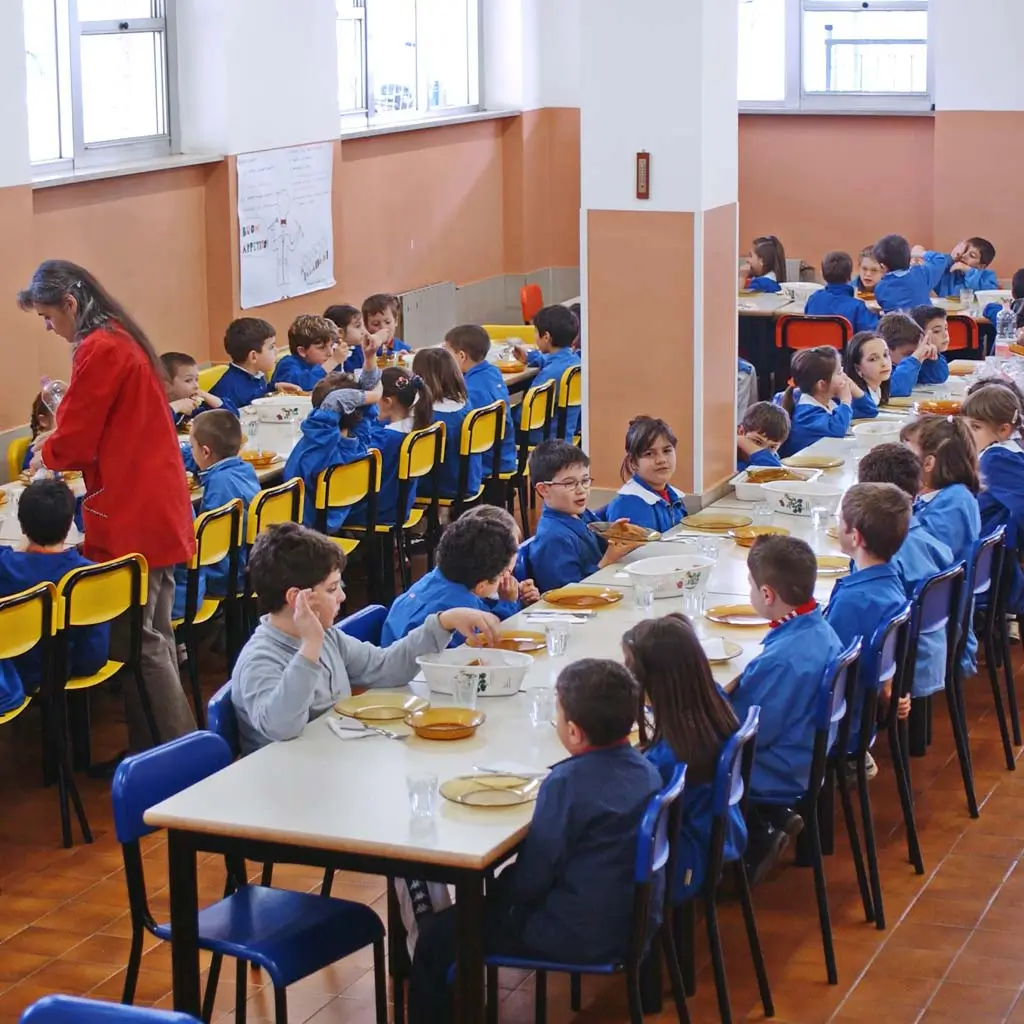
Scroll through → How To Manage A School Cafeteria
But before adopting the ideas, it is imperative to consider what an ideal cafeteria looks like. At Ingenious Culinary Concepts (ICC), we firmly believe that visualizing a well-behaved school cafeteria serves as a model for developing strategies and ideas for behavior control. Here is what a well-behaved cafeteria looks like.
What does a well-behaved cafeteria look like?
- Clean, inviting atmosphere
- Polite conversations
- No offensive language
- Clear signage for food
- Patient, orderly queues
- Comfortable seating
- Visual menu aids
- Eco-friendly utensils
- Recycling bins
- Friendly staff
- Student responsibility
- Social meal times
- Supportive teachers
- Hand sanitizer stations
- Inclusive environment
Behavior Management in School Cafeterias: The Issues
Building a school is easy but managing it especially a school cafeteria presents various obstacles that, if not addressed effectively, can substantially influence children. Some of the common issues seen include:
Inconsistency in Response
Sometimes, when students misbehave, different staff members react differently. This can confuse students because they’re not sure what to expect. It makes it hard to set clear rules and ensure everyone follows them. When rules aren’t unclear, keeping order in the cafeteria is tough.
Misuse of Authority
Some staff members use punishment too much when dealing with misbehavior. Instead of finding better ways to handle things, they punish students. This can worsen behavior problems and doesn’t help students learn to behave better.
Lack of Data-Driven Strategies
Schools often don’t use data to understand behavior problems. Looking at the facts makes it easier to come up with effective solutions. Things like how loud the cafeteria is or how quickly staff responds to misbehavior can make a big difference.
Repetitive Ineffective Interventions
Sometimes, schools use the same methods to deal with misbehavior, even if they don’t work. This means the same problems keep happening over and over again. Without trying new approaches, behavior issues won’t get better.
Primary with Secondary Combined Lunchtime
The cafeteria space is limited, and there are many students, making it hard to design a cafeteria that works well for everyone. Combining lunchtimes for primary and secondary students leads to overcrowding and makes it harder to manage behavior.
The age difference and varying needs of primary and secondary students can create conflicts and disruptions in the cafeteria environment, as younger students may feel overwhelmed or intimidated by older ones.
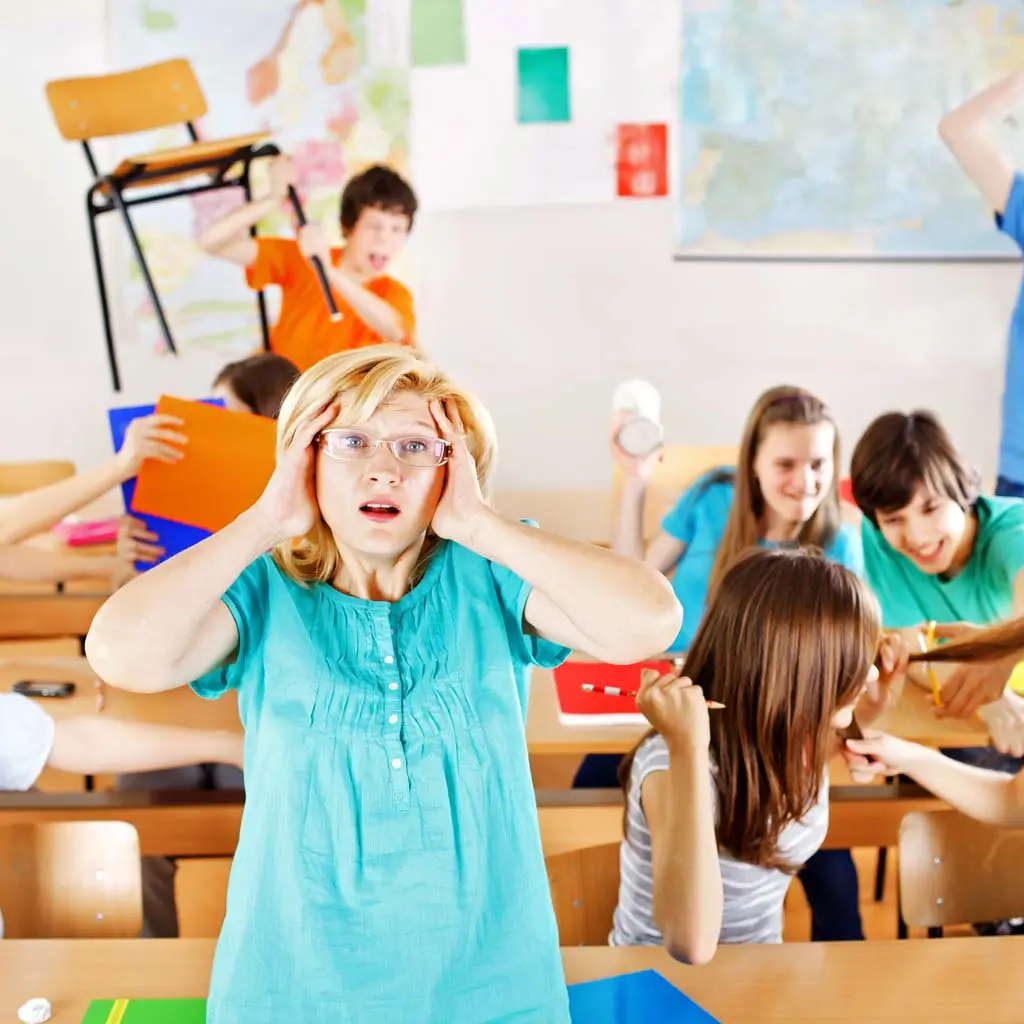
Hire our Cafeteria Design Services and Cafeteria Seating Services Today!
Cutting in Line
Cutting in line is a common behavior issue in cafeterias that disrupts the flow of lunchtime routines. It can lead to frustration and conflict among students waiting their turn to get food, contributing to inefficiency and longer wait times for everyone.
Read our guide → Big Eight Food Allergens
Bullying
Another problem faced is bullying or exclusionary behavior, which seriously affects students’ well-being. Not proper handling can create feelings of isolation, fear, and insecurity among victims, as well as contribute to a hostile and unwelcoming environment for everyone.
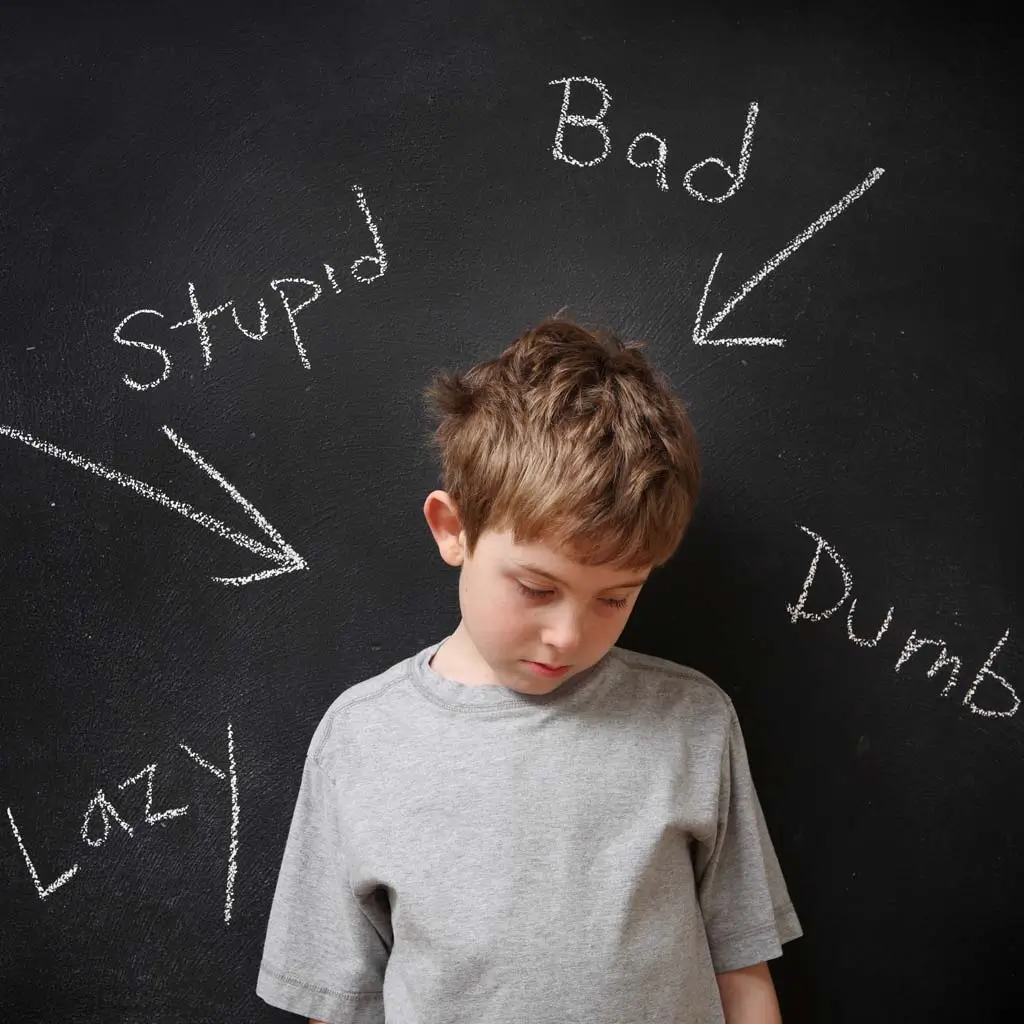
Communicating Hindrance
Excessive noise in the cafeteria can hinder communication between students and staff, making it challenging to address behavior issues effectively. When noise levels are high, it can be difficult for staff to give instructions or for students to communicate their needs or concerns.
Read our full-fledge guide to → How to Reduce Noise in School Cafeteria
Physical Conflicts
Physical conflicts such as pulling and pushing can escalate quickly and pose safety risks for students and staff in the cafeteria. These behaviors can lead to injuries, property damage, and lunchtime disruption. Implementing clear expectations and consequences for physical aggression can help deter such behaviors and promote a safer cafeteria environment.
School Cafeteria Behavior Management Ideas
As with the above issues, navigating school cafeteria behavior can be tricky, but keeping things running smoothly is important. Research shows that how kids behave during lunch can greatly impact their health, grades, and performance in class. While lunchtime should be a chance for students to relax and chat with friends, respecting each other and their surroundings is also important.
Suggested reading → The Impact of School Cafeterias
But it doesn’t just go with the student. The student’s actions during lunchtime also convey about the school’s leadership style. The leaders might be too laid-back if there’s a lot of chaos. On the flip side, it could be a sign of overbearing leadership if things feel too strict. Hence, finding the right balance is key. So, here are some effective tips to help manage behavior in the cafeteria.
School Cafeteria Behavior Management 15+ Ideas
- Structured Lines
- Supervised Cafeteria Staff
- Stick to Routines
- Reward Good Behavior
- Provide Post-Lunch Activities
- Hold Lunchroom Raffles
- Establish Cafetiere Expectations
- Display Cafeteria Rules
- Use Signals and Consequences
- Provide Reminders
- Encourage Collective Responsibility for Cleanliness
- Empower Student Leaders as Behavior Monitors
- Schedule Lunchtimes
- Use a Point System
- Facilitate Classroom Discussions
- Incorporate (PBIS)
- Clarify Adult Roles
- Utilize a Color-Coded Behavior System
Let’s take a detailed look at these:
Structured Lines for Order
Create designated lines in the cafeteria where students can wait to get their meals. This will help everyone get their food in an orderly manner. Moreover, teachers or designated staff should manage the lines properly, ensuring they don’t get too crowded, as this might lead to frustration in kids.
Read → How to Improve School Cafeteria Food
Supervised Cafeteria with Rotated Staff
Assign parent volunteers and teachers to supervise the cafeteria during lunch breaks. Rotate staff members to ensure consistent adult presence and minimize disruptions.
Reward Good Behavior
Implement a reward system to recognize tables with exemplary behavior. Offer incentives such as early recess or priority seating to encourage positive student interactions and cooperation.
Suggested reading → The Different Types of Cafeteria Tables for Schools
Stick to Routines
Establish consistent and engaging routines for lunchtime activities to help students navigate the cafeteria environment smoothly. Clearly communicate expectations and reinforce routines regularly.
Provide Post-Lunch Activities
Offer enjoyable activities after lunch to keep students engaged and minimize opportunities for misbehavior. Consider incorporating quiet games, storytelling sessions, or artistic activities to promote relaxation and positive interactions.
Use a Point System
Introduce a point system to reinforce positive behavior and adherence to cafeteria rules. Reward students with points for demonstrating desired behaviors and provide incentive such as making them the monitor in class for reaching specific milestones.
Use Signals and Consequences
Establish clear signals to regulate noise levels and address misbehavior promptly. Consistently enforce consequences for inappropriate behavior to promote accountability and maintain a positive lunchroom atmosphere.
Hold Lunchroom Raffles
Give tickets to students behaving well for a chance to win prizes. This will encourage everyone to behave nicely and get a ticket.
Establish Early Cafeteria Expectations
Educate students about cafeteria expectations at the beginning of the school year. Use interactive sessions and practice scenarios to familiarize students with behavioral norms and promote a positive cafeteria culture.
Suggested reading → How to Create the Best High School Cafeteria?
Schedule Lunchtimes
Stagger lunch periods and limit the number of students in the cafeteria at once to reduce overcrowding and chaos. Ensure that lunch schedules are designed to accommodate the needs of both students and staff.
Provide Reminders
Offer gentle reminders to students who need to follow cafeteria rules. Implement progressive consequences for persistent misbehavior, such as loss of privileges or additional supervision.
Utilize a Color-Coded Behavior System
Implement a color-coded system to indicate acceptable behavior levels in the cafeteria. Use visual cues to help students self-regulate and maintain appropriate behavior.
Facilitate Classroom Discussions
Engage students in discussions about expected behavior in the cafeteria. Encourage students to share their ideas and perspectives on creating a healthy lunchroom environment.
Display Cafeteria Rules Regularly
Post cafeteria rules and guidelines prominently and review them regularly with students. Ensure that rules are clear, concise, and easily understood by all school community members.
Clarify Adult Roles in Cafeteria Supervision
Define clear roles and responsibilities for adults supervising the cafeteria. Ensure staff members understand their roles in promoting positive behavior and maintaining a safe and orderly lunchroom atmosphere.
Incorporate (PBIS)
Integrate Positive Behavior Interventions and Supports – PBIS principles into behavior management strategies to promote positive behavior. Use positive reinforcement and prizes to encourage students to demonstrate desired behaviors.
Encourage Collective Responsibility for Cleanliness
Promote a sense of shared responsibility for maintaining cleanliness in the cafeteria. Encourage students to clean up and work together to tidy the cafeteria environment.
Empower Student Leaders as Behavior Monitors
Train student leaders to assist with monitoring behavior in the cafeteria. Provide them with guidance and support to effectively promote good behavior and resolve conflicts among their peers.
By implementing these strategies effectively, schools can create a positive and supportive cafeteria environment that promotes positive behavior, social interaction, and student well-being.
Suggested reading → 10 Easy Steps to Modernize Your School Cafeteria
Conclusion
In summary, the school cafeteria is more than just a place to eat; it’s the ultimate classroom for healthy habits and social growth. By fostering a positive atmosphere and implementing our proven listed behavior control strategies, you can nourish both minds and bodies and turn down the misconduct and noise levels at the cafeteria.
Got any more questions? We’ve got answers! Just fill out our contact form and get our expert guidance/consultation within 24 hours to make your school an outlandish place for kids to learn and succeed. Let’s create cafeteria magic together! 🍎✨
FAQs
What steps can be taken to promote healthy eating habits in the cafeteria?
Offer nutritious meals such as fresh fruits, vegetables, and whole grains. Implement educational programs or signage highlighting the nutritional value of different food choices. Additionally, limit the availability of sugary drinks and snacks while promoting water and healthier alternatives.
What are some effective strategies for reducing food waste in the school cafeteria?
One effective strategy for reducing food waste in the school cafeteria is implementing a “take what you can eat” policy. Encourage students to only consume what they finish, offer smaller portions to minimize leftover food, and consider partnering with local food banks or community organizations to donate excess food that is still safe for consumption.
Read our complete guide → 5 Ways to Reduce Food Waste in Schools
How can respectful behavior during lunchtime be encouraged?
You can encourage good behavior by first constructing and communicating clear rules about following orders and being nice to others. Secondly, you can praise students who follow these rules and give them little prizes. Doing this a lot can make lunchtime better for everyone.

